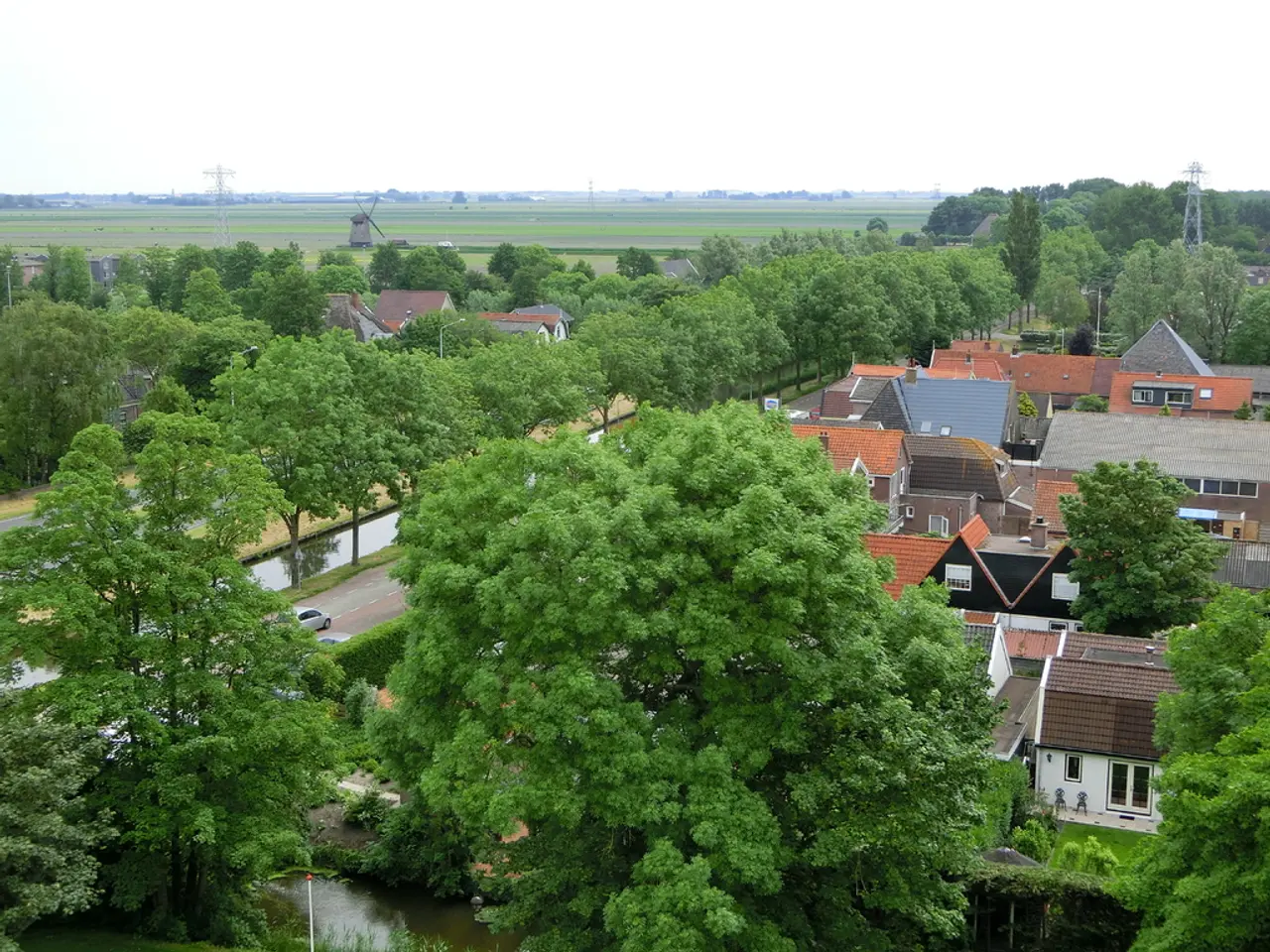Transition in Energy: NRW Outperformed, Bavaria Exceeding
In the race towards a greener future, the German states of Bavaria and North Rhine-Westphalia (NRW) have taken distinct paths in the development of wind and solar energy. These differences are influenced by geographic, regulatory, and capacity factors.
Wind Energy Development:
NRW leads in wind energy approvals and capacity. In 2025, NRW accounted for over one third of the newly approved 7.8 GW of wind capacity in Germany, with 1,002 MW awarded in recent onshore wind auctions, the highest among states [1][2]. This reflects NRW's historically strong wind energy infrastructure and favourable policies supporting expansion.
On the other hand, Bavaria, traditionally behind due to a north-south divide in wind energy, is accelerating its wind capacity growth. It ranked third in newly approved wind turbines in the first half of 2025, signalling a catch-up in wind development despite geographic and regulatory challenges that previously slowed expansion [1]. However, wind development in Bavaria still lags relative to NRW.
Solar Energy Development:
Bavaria leads solar energy installation significantly. In Q1 2025, Bavaria installed 1.21 GW of new solar capacity, nearly three times that of NRW’s 0.42 GW, making it the top solar expansion state by a wide margin [3]. This dominance is due partly to Bavaria's higher solar irradiance and supportive policies encouraging large- and small-scale solar PV projects.
NRW, while behind Bavaria in solar, maintains solid growth but with less scale and pace, reflecting differing natural and political conditions [3].
Factors Affecting Development:
| Factor | Bavaria | North Rhine-Westphalia | |----------------------------|------------------------------------------------------|-------------------------------------------------| | Geography and Resource Endowment | Located in southern Germany with better solar radiation, but less optimal wind conditions due to terrain and lower average wind speeds | Located in western/northern Germany with more favourable wind conditions and historically stronger wind industry | | Regulatory Environment | Increasingly proactive policies, especially for solar tenders and innovation projects; some prior regulatory hurdles for wind easing | Well-established wind permitting frameworks and auction success; stronger pipeline for onshore wind projects | | Installed Capacity & Infrastructure | Total capacity approx. 39.7 GW (all sources, 2024) with strong growth in solar | Largest total installed generation capacity in Germany at about 44 GW, with strong wind capacity base [4] | | Recent Tender and Auction Success | Led recent innovation tenders in PV + battery projects with multiple awarded projects totaling 137 MW [5]; Solar expansion boosted by policy incentives [3] | Highest volume of wind auction awards indicating strong market confidence [2] |
Thus, NRW’s renewable expansion is currently wind-driven, leveraging its favourable wind resources and established infrastructure, while Bavaria’s rapid expansion is driven primarily by solar energy, benefiting from superior solar conditions and focused policy support. Both states are vital to Germany’s overall renewable targets but face different geographic and regulatory realities shaping their respective growth trajectories [1][2][3][4][5].
Interestingly, Bavaria is ahead of NRW in photovoltaic performance per square kilometer, with an average of 1,150 kilowatt hours per year and square meter from 1991 to 2020 in Bavaria compared to 1,035 kilowatt hours in NRW. As both states strive to catch up where they currently lag behind - Bavaria in wind energy, NRW in solar cells on open spaces - they continue to navigate the complex landscape of renewable energy development in Germany.
The renewable-energy industry is witnessing disparate growth patterns in Bavaria and North Rhine-Westphalia (NRW) due to geographic and regulatory factors. NRW, with its strong wind energy infrastructure and supportive policies, leads in wind energy approvals and capacity, while Bavaria, initially trailing in wind energy, is rapidly increasing its wind capacity due to enhanced policies and geographic improvements.
In contrast, Bavaria dominates solar energy installation, owing to its superior solar conditions and supportive policies, while NRW, although behind Bavaria in solar, maintains solid growth but at a slower pace, reflecting different natural and political conditions. Thus, NRW's renewable expansion is predominantly wind-focused, while Bavaria experiences rapid growth primarily in solar energy.




